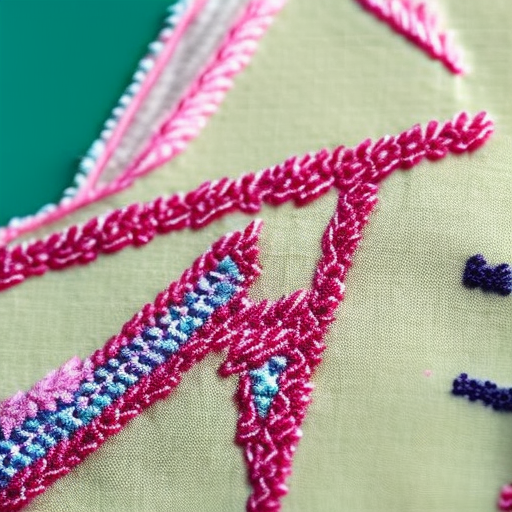Sewing Tips: Embroidery
Introduction to Embroidery
Embroidery is a beautiful technique that involves adding decorative designs and embellishments to fabric or other materials using a needle and thread. It is a versatile craft that can be used to personalize various items such as clothing, home decor, and accessories. Whether you are new to sewing or an experienced crafter, here are some essential tips to enhance your embroidery skills.
1. Choosing the Right Fabric
When starting an embroidery project, it’s important to select fabric that complements your design and enhances the finished piece. Ideal fabrics for embroidery include cotton, linen, and silk, as they provide a sturdy base while being easy to work with. Avoid stretchy or slippery fabrics as they can be challenging to embroider on.
2. Preparing Your Fabric
Before beginning an embroidery project, make sure to prewash and press your fabric. This step helps remove any sizing or chemicals that might affect the embroidery process. Ironing the fabric ensures a smooth, wrinkle-free surface, making it easier to transfer your design and stitch accurately.
3. Using Embroidery Hoops
Embroidery hoops keep your fabric taut while stitching, preventing puckering and bunching. Choose a hoop size that comfortably fits your design, allowing enough space for the needle and thread. Place the inner hoop under your fabric and the outer hoop over it, tightening the screw to secure the fabric. Adjust it as needed while working on different sections of your design.
4. Transferring the Design
Transferring the embroidery design onto your fabric is an essential step. There are various methods you can use, such as using an iron-on transfer pencil, tracing paper with a water-soluble pen, or transferring the design directly using an embroidery transfer tool. Choose the method that suits your fabric and design best, ensuring clear and accurate placement of motifs.
5. Practicing Stitching Techniques
Learning and mastering different stitching techniques is crucial in embroidery. Start with basic stitches like backstitch, satin stitch, and French knots. As you gain confidence, experiment with more advanced stitches like feather stitch, chain stitch, or seed stitch. Practicing these techniques will not only refine your skills but also allow you to add more depth and complexity to your designs.
6. Finishing and Caring for Embroidery
Once your embroidery is complete, it’s essential to finish and care for it properly. Secure your stitches by knotting off the thread on the backside of the fabric, ensuring longevity. If necessary, block your embroidery for a professional, flat finish. When washing, follow the care instructions for the fabric. If your embroidery is delicate, consider handwashing it or using a gentle cycle on your washing machine.




